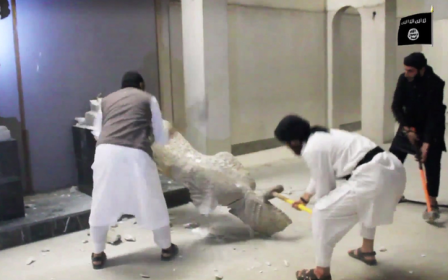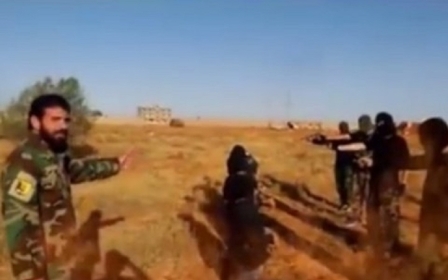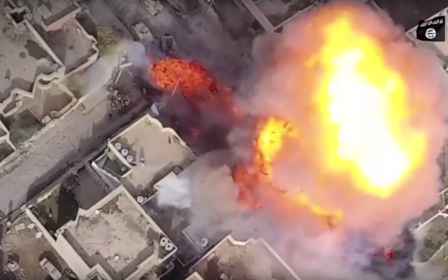YouTube accused of removing evidence of latest Syria chemical attack
A video of the reported chemical attack on Douma Syria last week has been taken down by YouTube, according to images shared on social media.
Western officials believe chlorine was used in an attack on Saturday on Douma, the main town in the long-time rebel bastion of Eastern Ghouta. The British government now estimates 75 people were killed as a result of the attack, and believes that Syrian President Bashar al-Assad's government was responsible.
What is less clear is whether sarin, or a sarin-like agent, was used as well as chlorine.
Tensions have been rising between the West and Syria and its ally Russia, as Trump told the Syrians and Russians that missiles “are coming" and France and the UK looked set to join in any US military action.
This is not the first time YouTube has been accused of deleting videos depicting possible war crimes during the Syrian civil war.
In August, several organisations - including Middle East Eye, open source investigations site Bellingcat, and monitoring group Airwars - said that a number of their videos had been removed by YouTube for violating the platform's "community guidelines".
Since then vast tracts of footage, including evidence used in the Chelsea Manning court case and videos documenting the destruction of ancient artefacts by Islamic State, have been flagged as "extremist" and deleted from its archives.
The use of open-source data to prove crimes and shed light on the situation in difficult to reach war-torn areas such as Syria has become increasingly important.
In August, the International Criminal Court (ICC) issued for the first time an arrest warrant based solely on social media-sourced evidence in a case involving a Libyan military commander.
The charge was based on seven separate incidents of executions which were documented in separate pieces of video footage, and widely shared on social media.
Often the footage shared on YouTube is not available on any other platform, and if the footage is not backed up by the user, it can be lost permanently.
Ibrahim Olabi, director of the Syrian Legal Development Programme, told Middle East Eye: “A trick of those who support Russian propaganda is to report a video as graphic or violent,” adding that many of the videos are of course violent as they document violent crimes. YouTube's community guidelines allow for the posting of graphic content in a "news or documentary context".
Olabi added that when users report content under a false pretext, "YouTube then takes them down for being graphic, that is how the information and the evidence is taken away.”
He said that this removal of videos has an impact on raising awareness of what is actually happening on the ground.
Such videos, he said, play an important role in the documentation of crimes and can assist human rights organisations and news outlets in their reporting.
“YouTube has a responsibility not to allow evidence of crimes that are uploaded to YouTube to be tampered with or to be removed because they can really assist in understanding the context,” he said.
YouTube told the Times in August that it had improved the tools used by its reviewers for taking down videos, but admitted to mistakes.
"With the massive volume of videos on our site, sometimes we make the wrong call. When it’s brought to our attention that a video or channel has been removed mistakenly, we act quickly to reinstate it.”
Speaking to MEE in August, a spokeswoman for YouTube said: "Previously we used to rely on humans to flag content, now we're using machine learning to flag content which goes through to a team of trained policy specialists all around the world which will then make decisions.
"So it’s not that machines are striking videos, it’s that we are using machine learning to flag the content which then goes through to humans."
YouTube did not respond to a request for comment on the removal of this particular video.
Using open source data means that bodies such as the ICC have “a potential mine of evidence” at their disposal, according to Christiaan Triebert, researcher at the open-source investigations site Bellingcat.
This is especially important, he told MEE in September, in areas where access is limited. For example, areas “controlled by the so-called Islamic State are hard if not impossible to enter as a field investigator”.
Olabi also said that while this footage is extremely important, it also raises questions of the chain of custody, when and where videos were filmed, and whether the footage has been edited, which requires experts to decipher.
The use of open source evidence means that perpetrators of war crimes might be forced to obscure their location in any videos shared online, in an effort to evade justice.
“We have seen this with so-called Islamic State in footage coming from Syria for example… Similarly, footage from Yemen has seen the obstruction by blurring the background,” Triebert told MEE.
Middle East Eye propose une couverture et une analyse indépendantes et incomparables du Moyen-Orient, de l’Afrique du Nord et d’autres régions du monde. Pour en savoir plus sur la reprise de ce contenu et les frais qui s’appliquent, veuillez remplir ce formulaire [en anglais]. Pour en savoir plus sur MEE, cliquez ici [en anglais].




